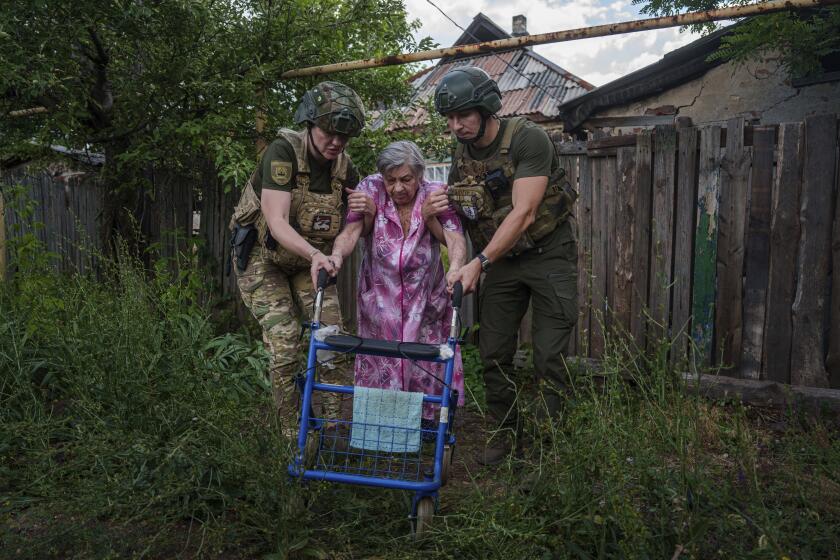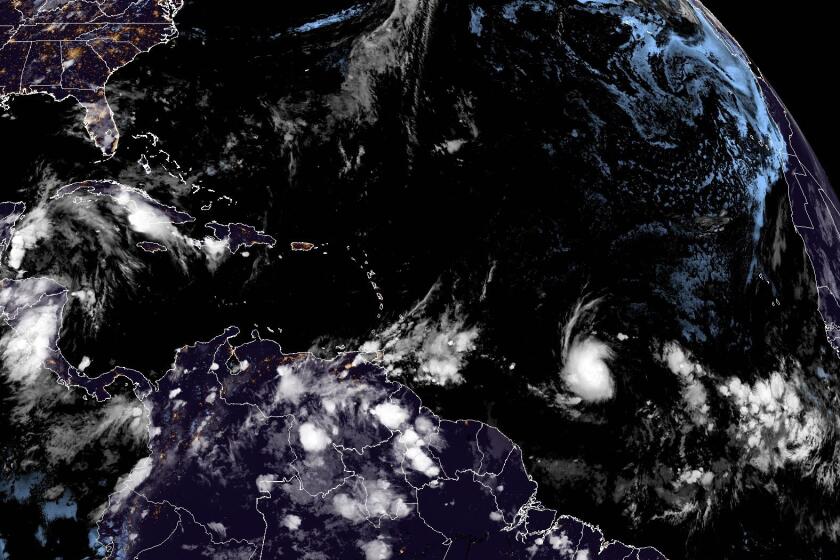Met by Cheering Crowds : Explorers Return, Plan ‘Photo-Mosaic’ of Titanic
The Titanic’s explorers sailed home to cheering crowds and blaring ship’s horns Monday, carrying 57,000 color photos and hundreds of videotapes of the sunken luxury liner.
Expedition leader Robert D. Ballard said that about 100 photos will be fitted together to form a “photo-mosaic” of the broken wreck and debris, which lie in utter darkness 2 1/2 miles down on the ocean floor.
“I don’t know that any part of the debris area or ship was not photographed,” Ballard told about 250 friends, relatives and reporters who met the scientists’ ship, the Atlantis 2, at the Woods Hole Oceanographic Institution docks.
To Release Photos
Photos and videotapes of the 74-year-old wreck, the largest and most luxurious ship of its time, will be released Wednesday at a press conference in Washington, officials said.
Ballard, who first found the wreck last September in a joint U.S.-French expedition, said that he has “no desire” to return.
Neither does the U.S. Navy, Adm. Brad Mooney, chief of the office of naval research, said. The Navy paid for the Titanic expedition as part of a five-year, $2.8-million contract to develop deep-sea diving research and exploration vehicles.
‘Let It Lie in Peace’
“I think our position is the Titanic ought not to be disturbed,” Mooney said. “Let it lie in peace.”
All told, the scientists worked about 33 hours at the wreck during 10 dives in the Alvin, a three-man mini-submarine. They found the Titanic, which hit an iceberg and sank on April 15, 1912, on its maiden voyage, broken into two large sections. The bow is partly buried and rusting badly, but largely intact.
It sits upright about one-third mile north of the badly damaged stern. The ship’s midsection apparently was destroyed, and plates, pots and other debris are scattered widely.
Although the scientists and crew took no artifacts from the wreck, Alvin pilot Will Sellers carried eight souvenirs from the ocean bottom--foam-plastic coffee cups, decorated with ink drawings of the Titanic, that he had lashed to the submarine’s hull.
The underwater pressure of nearly 400 times atmospheric pressure had crushed the cups to about one inch high and turned them rock-hard.
“Everyone sent something down,” Sellers said, twirling the cups on a piece of fishing line. “Someone sent down a (foam-plastic) six-pack cooler. It came back perfect. It holds one beer now.”
Electronic Probe Praised
Crew members were full of praise for the suitcase-size electronic probe, Jason Jr., that swam on a 200-foot tether from the manned mini-sub and took pictures of shiny brass plaques, dangling chandeliers, glass portholes and other remnants of the once-elegant liner.
“The thing flew like a feather,” the probe’s designer and operator, Martin Bowen, said proudly. He wore an “Operation Titanic” patch, showing a picture of the giant ship, on his blue jump suit.
However, project engineer Chris von Alt said that the Jason Jr. had been only about “60% efficient” because of “electronic gremlins” that shorted out its power during several dives.
More to Read
Start your day right
Sign up for Essential California for news, features and recommendations from the L.A. Times and beyond in your inbox six days a week.
You may occasionally receive promotional content from the Los Angeles Times.







